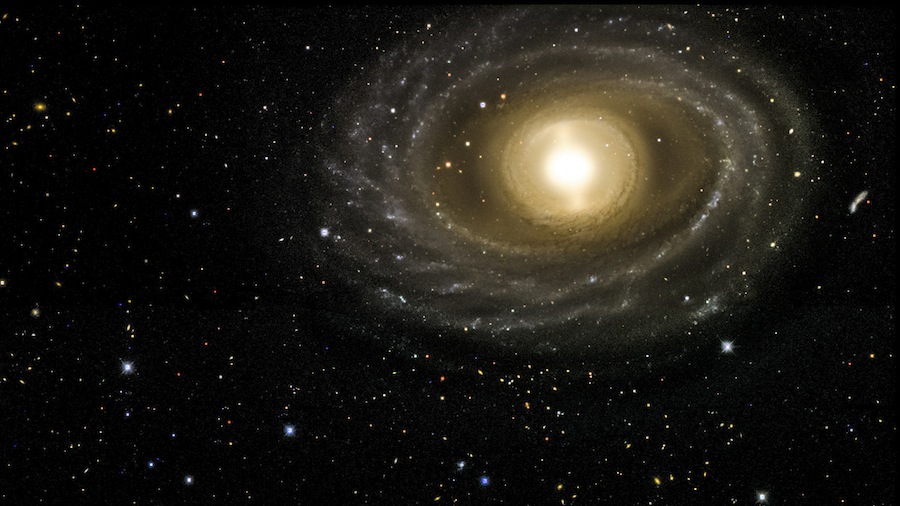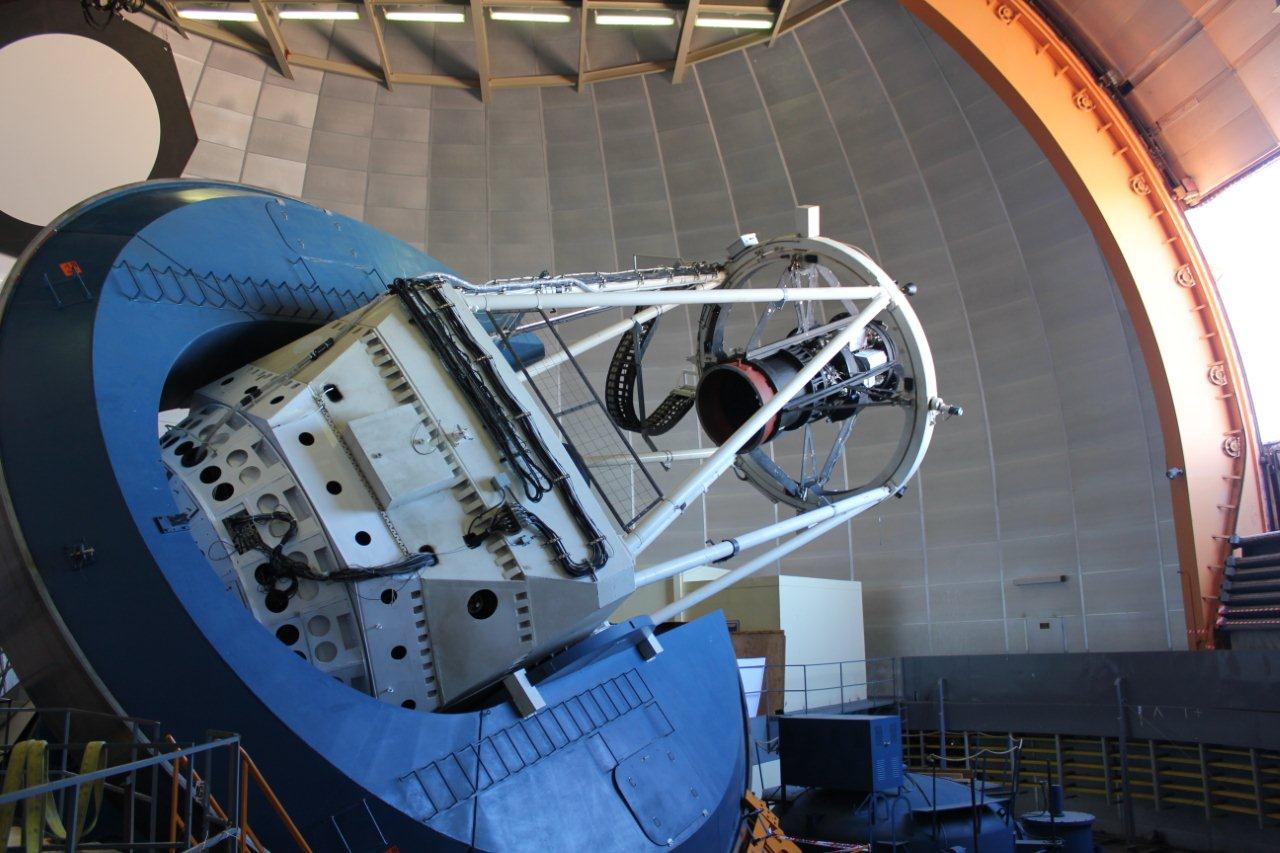Dark Energy Survey: Mapping the Expansion of the Universe

The Dark Energy Survey (DES) maps the universe in infrared to figure out the answer to a burning question: why is the universe accelerating in its expansion?
The effort arises from a surprise finding from astronomers looking at far-away supernovae, or star explosions, the DES website says. In 1998, they discovered that the universe is not only expanding, but expanding faster as it grows. It was a surprise given that Albert Einstein's theory of general relativity says gravity should actually slow down the expansion of the universe.
"To explain cosmic acceleration, cosmologists are faced with two possibilities," the DES website says. "Either 70 percent of the universe exists in an exotic form, now called dark energy, that exhibits a gravitational force opposite to the attractive gravity of ordinary matter. Or general relativity must be replaced by a new theory of gravity on cosmic scales." [Amazing Photos From Dark Energy Camera in Chile]
Overview
We've known the universe has been expanding since about the 1920s, when astronomers such as Edwin Hubble tracked the motion of distant galaxies. They saw that galaxies move faster when they are farther away from us. This expansion could be associated with the energy of the Big Bang, which birthed space and time about 13.7 billion years ago. Acceleration, however, is harder to explain.
Dark energy and dark matter — which is believed to account for most of the mass of the universe — remain some of cosmology's most enduring mysteries. The theory goes that the matter that we can see makes up less than 5 percent of the universe. Dark energy is roughly 69 percent and dark matter, 27 percent.
The DES survey is taking place between 2013 and 2018 using the Blanco 4-meter telescope at Cerro Tololo Inter-American Observatory. The observatory is located high up in the Chilean Andes, and the project has support from the United States, Spain, the United Kingdom, Brazil, Germany, Switzerland and Australia.
The survey is made possible using the DECam, a 570-megapixel digital camera designed to capture wide swaths from the sky. The project will run for 525 observing nights, looking at 300 million galaxies billions of light-years from Earth (close to the time the universe was formed.)
Breaking space news, the latest updates on rocket launches, skywatching events and more!
Over time, the camera is expected to precisely map the movements of galaxies and supernovae to try to figure out "patterns of cosmic structure,” the DES website says. The overall goal is to learn more about the acceleration of our universe's expansion.
If dark energy does exist, the next question is trying to figure out what it is as it can't be sensed by conventional instruments. The DES suggests a couple of possibilities. One is that dark energy is actually the "intrinsic energy" of empty space, sometimes referred to as the cosmological concept. The energy is believed to be a "negative pressure" that makes the universe grow faster.
Another possibility is that it's a so-far unseen type of particle that would be much lighter than the Higgs boson, which was discovered in 2012. This would mean the density of dark energy lessens over time. (If dark energy's density actually gets stronger, this would eventually rip apart galaxies, stars and atoms in a process dubbed "The Big Rip.")
Results and future work
The biggest result so far came in April 2015, when scientists with the survey released the first dark matter map based on data from the DES. According to a news release from the Fermi National Accelerator Laboratory (Fermilab), the maps will help astronomers understand how dark matter helps create galaxies. Scientists also expect to learn about dark energy by looking at the "clumpiness" of the dark matter. (Fermilab is a DES participant as among other contributions, it built DECam).
Dark matter can't be seen by conventional instruments, but it can be studied through its gravitational effects. A common example is gravitational lenses, “when the gravitational pull of dark matter bends light around distant galaxies,” Fermilab added. The theory goes that galaxies form amid concentrations of dark matter (in other words, in strong gravity). So far — although the first map only includes 3 percent of the sky DES will survey — the observations match the prediction.
In early 2016, DES followed up the map with a huge release of information gathered by the camera between November 2012 and February 2013. The catalog contains information on 25 million objects. As this was very early data, Fermilab said in January 2016, far more information will be released in the future. DES' future work could include findings in gravitational waves, which are believed to occur when huge objects disrupt space-time.
There also have been side benefits to doing the survey. In 2015, both DES scientists and an independent group from the University of Cambridge discovered a rare type of dwarf satellite galaxies using the first year of DES data. Since dwarf galaxies are the smallest known galaxies, Fermilab wrote, "they could hold the key to understanding dark matter and the process by which larger galaxies form." In a separate discovery that year, scientists found eight dwarf galaxies that could be satellites to the Milky Way.
In 2016, NASA quickly denied reports that a theoretical “Planet Nine” — proposed by Konstantin Batygin and Mike Brown, two planetary scientists from the California Institute of Technology – is tugging on the Cassini probe orbiting Saturn. When the news reports were circulating that April, DES was cited as a possible survey that could help find Planet Nine because it is searching in the same region of the constellation Cetus, where astronomers are looking for the planet.

Elizabeth Howell (she/her), Ph.D., was a staff writer in the spaceflight channel between 2022 and 2024 specializing in Canadian space news. She was contributing writer for Space.com for 10 years from 2012 to 2024. Elizabeth's reporting includes multiple exclusives with the White House, leading world coverage about a lost-and-found space tomato on the International Space Station, witnessing five human spaceflight launches on two continents, flying parabolic, working inside a spacesuit, and participating in a simulated Mars mission. Her latest book, "Why Am I Taller?" (ECW Press, 2022) is co-written with astronaut Dave Williams.

